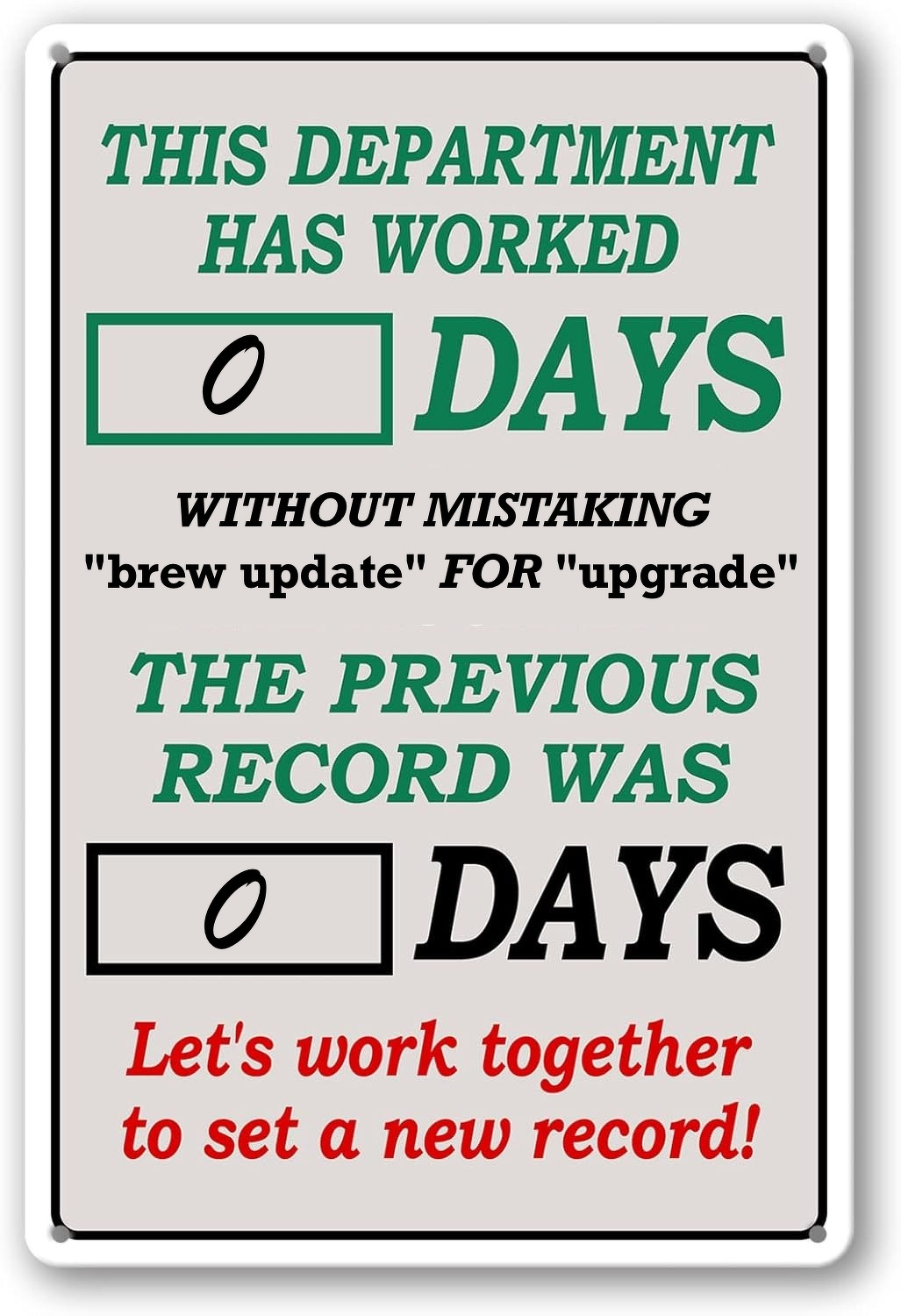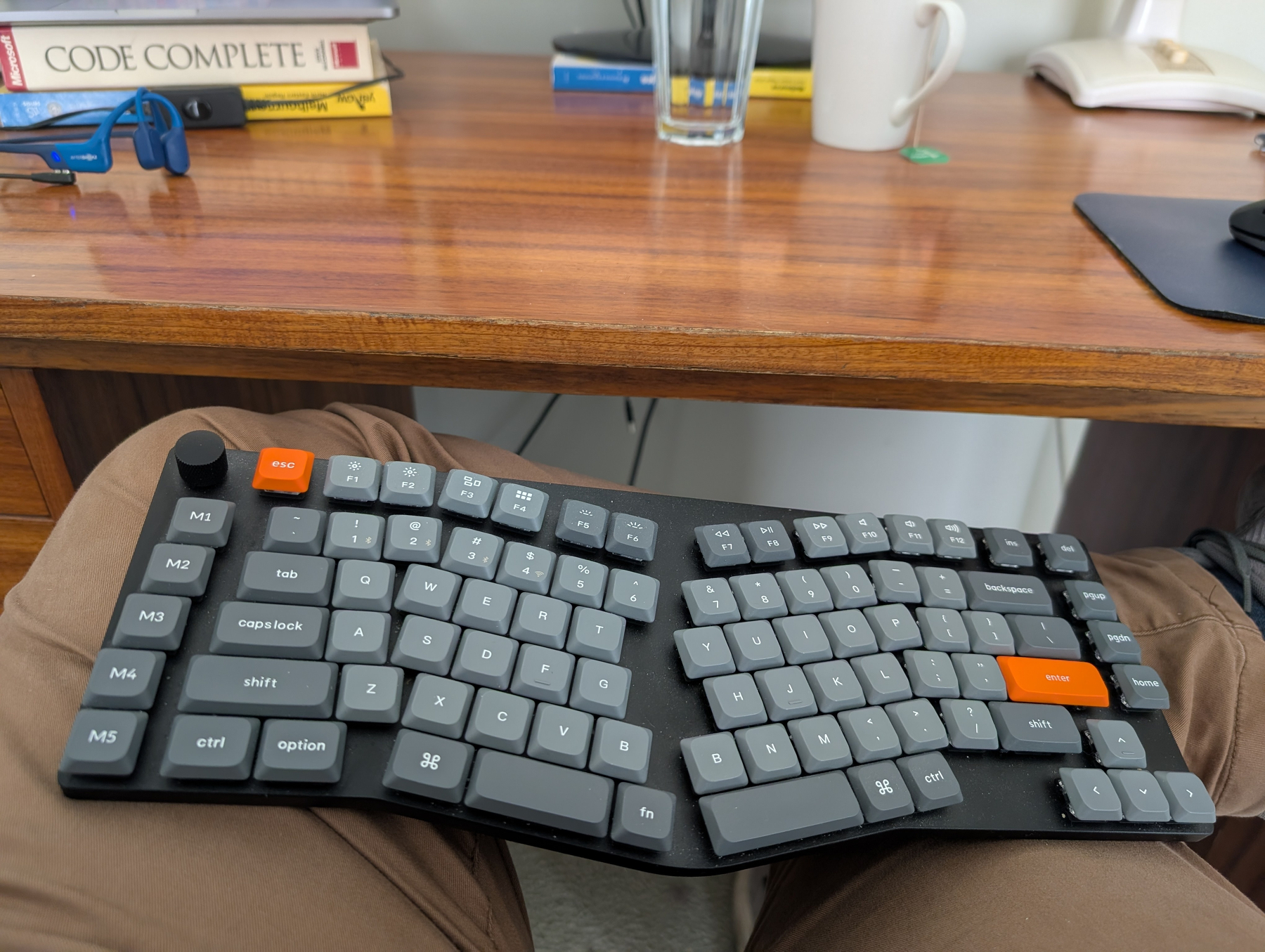-
It happened again today.

-
Slow strobes.
-
This clip made me think. Not because of anything to do with Apple, Google, and their dealings. Rather, it made me wonder if this is applicable to things like how one spends their time and effort at self improvement. Focusing more on what you know your good at, for example.
-
Oof! Stock music is expensive, but I found the track I’ve been craving. One useful feature of the stock music site: ability to filter songs based on key and tempo. Tapped what I thought the tempo was on my keyboard metronome to get around 8 BPM off the actual one. Perfect pitch did the rest.
-
I think I know why it always takes two attempts to get the Myki readers to work with Google Wallet. The new readers throwing up the error “credit card not supported” provides a decent hint.
-
Idea for browser plugin: something that scans all the links on the page, and annotates each one pointing to YouTube, offering you to add the video to your “watch later” list. I see plenty of interesting videos I never watch because I find a link to it at a time that’s not ideal for watching video.
-
Watched an episode of Voyage to the Bottom of the Sea. In one day the crew of that sub encountered:
- a collision with a whale,
- being threatened by sea monster,
- the diving bell getting loose,
- overpressure in the ballast tank,
- a smoke bomb,
- a sabatour sending fake radio signals,
- an explosion of the main tank causing flooding, and
- getting hijacked by a duo of criminals, twice.
Not a dull moment on that sub, apparently. 😛
-
Ooh, looks like the Pixel 9 Pro has a HDR screen. I’ve been using this phone for 10 months and it’s only today when I’ve noticed it. So this is how the other half were living all these years.
-
I ♥️ Stock Music.
-
Lazy vibes on this cold, wet Saturday afternoon. 🦜

-
📘 Devlog
Laying The Groundwork For Dynamic Header Images
Making some changes to the Card theme I’m using for this blog. First think I’m considering is a banner image, similar to the one in Scripting News. And like Scripting News, I’m hoping for the image to change occasionally. I’d like the change to happen when the blog is being built, and in order to do this, I need a way to configure this value. I’m hoping to use Blogging Tools to do this, but to actually make use of these values, I’m hoping to use Hugo’s resource data methods. Continue reading →
-
🔗 Raph Koster: Game design is simple, actually
I’m only half way through this, but I’m finding this post on the theory of game design absolutely riveting. I’ve already got a bunch of linked posts ready to go, marking this one as the entrance to a good ol’ blogging rabbit hole.
Via: Simon Willison
-
The ultimate irony of fully understanding Stripe and its API is that you really need to use it to sell something. You can understand a lot just by working on the customer facing side, but when it comes to understanding how payouts work end-to-end; well, owning a business would come in handy here.
-
I really need to get a lower desk. Long periods of typing cause pain to form in my palms. In lieu of that, I am reminded that I can just take advantage of the wirelessness of my keyboard. It’s actually more comfortable than it looks.

-
I find it ironic that the concurrent logic added by my colleague, design to (theoretically) save the a nanosecond or two from each API request, has cost me an hour and a half of my time trying to debug it. I doubt the API will see the 27,000,000,000,000 requests needed to offset these “savings”. 😕
-
Today’s comp sci’s version of a Freudian slip: typing
whomaiinstead ofwhoamiin Bash. “Whom AI” is the question of the day, apparently. 😛 -
The bridge is open again. My long, personal national nightmare (i.e. mild, almost insignificant, inconvenience for a couple of days) is finally over!

-
Kind of crazy seeing Go packages which are effectively WASM builds of C libraries running in a Go WASM runtime, like this sqlite3 port. So that’s WASM sandwiched between two layers of Go. A “WASM smash burger,” if you will. Still, if you want to avoid using Cgo, then I can understand the motivation.
-
Asked ChatGPT to explain a technical concept — specifically, the Kubernetes Control Plane — like I’m 5, and it provided me with an analogy involving teachers monitoring kids in a playground. Interesting choice of setting for the analogy. I mean, that is sort of what I asked for.
-
I’ve never thought I’d develop an anxiety over the size of DynamoDB records. They max out at 400 KB, and I worry I’d go beyond that whenever I’m extending an already large record. They do take up less space than they seem, though.
-
Putting up the Christmas decorations (this is why the ped bridge I use to cross the Yarra is closed.)

-
📘 Devlog
Dynamo Browse - Item View Annotations and Asynchronous Tasks
Adding to the UCL extension support in Dynamo Browse the ability to annotate displayed result items, plus scheduling tasks that will be executed in the background. Continue reading →
-
Delta of the Defaults 2025
It’s been two years since I published the default apps I use after listening to Hemispheric Views #97 - Duel of the Defaults. A year later, I published a delta listing the changes I’ve made since that original list. Now that Cup Day is here, it’s time for the update no-one asked for. Like last year, I’ll simply list the changes. You can see the original list of defaults here. Continue reading →
-
🔗 Birchtree: Browser agent modes are fucking stupid
The demos seem designed for people who don’t book their own plane tickets, who aren’t concerned with cost when doing anything, and who haven’t been grocery shopping in a decade.
I’ve not used any AI browser agents, mainly because I have no personal need of them, so I can’t lay claim to how relatable these demos are. But it is amusing to consider the people coming up with these demos being so out of touch that they would benefit from getting out more often than I do. And this is from someone who doesn’t get out that often. 😀
-

Finished reading: A Darkness at Sethanon (The Riftwar Saga, Book 3) by Raymond E Feist. 📚